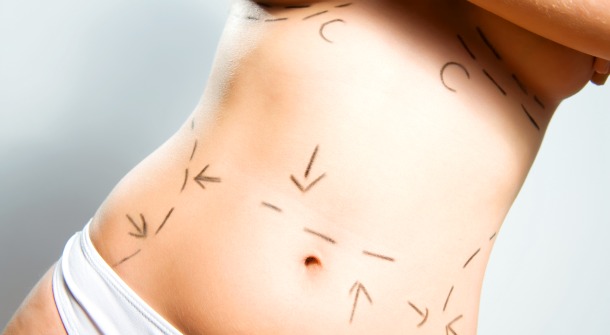Top Stories

Obesity & Liposuction
By Dr. D. Sultan Sheriff
"Thou seest I have more flesh than another man, and therefore more frailty."#ObesityIncreased waist circumference, abdominal subcutaneous fat and visceral fat, represent abdominal obesity. Abdominal obesity is associated with insulin resistance and other metabolic risk factors [1]. Though abdominal obesity is associated with insulin resistance (IR) the pathophysiological basis of IR cannot be explained by visceral obesity excepting to conjecture it may be related to metabolic complications of obesity [2].
Diet control and exercise may control abdominal obesity. But the long term management has proved to be futile with life style changes as many are reported to regain the lost weight over a period of time [3,4].
The effects of anti-obesity drugs including orlistat have proved to be ineffective and the psychological outbursts have resulted in seeking alternative forms of therapies. Recently, it has been suggested that liposuction, which can remove large amounts of body fat, is a potential treatment for the metabolic complications of obesity [5,6,7].
Liposuction (lipoplasty or suction- assisted lipectomy) is one of the aesthetic surgical procedures adopted and a great majority of obese people undergo this procedure in countries like USA [8]. With improved liposuction in techniques it is now possible to remove considerable amounts of subcutaneous adipose tissue [9]. Apart from helping to surgically remove abdominal fat it provides an opportunity to study the pathogenesis of insulin resistance in persons with abdominal obesity. However, the metabolic effects of liposuction are unclear because the results of studies have varied [5,6,7,10,11].
Liposuction
If an individual undergoes large olume tumescent liposuction results in the removal of more than 4 litres of aspirate [12] sayprimarily from superficial and deep subcutaneous abdominal fat. In addition, smaller amounts of fat can be removed from the arms, flanks, hips, or thighs.
Obesity is a global pandemic implicated in a variety of metabolic complications. It is considered to be a biomarker for non-communicable diseases like type 2 diabetes (T2DM). The most common surgical procedure adopted for obesity is liposuction. It is performed either as small-volume liposuction or large-volume liposuction, the majority being small-volume liposuction procedures. Large-volume liposuction has been clinically shown to improve insulin sensitivity in obese patients thus reducing their risk of developing type 2 diabetes, or beneficially improving their already manifest glucose intolerance.
From the days of Bertrand Russell who, when morphology did not count much significance, thought: "There is no need to worry about mere size. We do not necessarily respect a fat man more than a thin man. Sir Isaac Newton was very much smaller than a hippopotamus, but we do not on that account value him.” Whereas Shelley Bovey quotes: "Every day the fat woman dies a series of small deaths." Obesity has transformed our perspective on body fat. With obesity and obesogenic environment implicated as a chronic dysfunctional body homeostatic state nutritionists and medical professionals combat obesity to restore confidence and hope for many obese individuals to regain their body in shape to reinvent themselves with vigor and vitality to live.
Dr. D. Sultan Sheriff, a Professor and an administrator, has done his PG degree in Medical Biochemistry, Madras Medical College in 1971, and Ph D from Faculty of Medicine, University of Madras, 1977. He holds Memberships in various organizations including American Association of Clinical Chemistry, European Society of Human Reproduction and Early Human Development. He has got 150 research publications and about 10 books including a Text Book of Medical Biochemistry. He has served as an administrator as Chairman, Associate Dean and Dean of a Medical School in India and abroad. He is now working as Professor of Biochemistry, Faculty of Medicine, Benghazi University, Benghazi, Libya.
References:
1- Kissebah A.H., Videlingum N., Murray R., et al.: Relation of body fat distribution to metabolic complications of obesity. J. Clin. Endocrinol. Metab. 1982; 54: 254-260.
2- Abate N., Garg A., Peshock R.M., Stray-Gundersen J. and Grundy S.M.: Relationships of generalized and regional adiposity to insulin sensitivity in men. J. Clin. Invest 1995; 96: 88-98.
3- Klein S., Wadden T. and Sugerman H.J.: AGA technical review on obesity. Gastroenterology, 123: 882-932, 2002.[Erratum, Gastroenterology2002;123: 1752.
4- Matarasso A. and Hutchinson O.H.: Liposuction. JAMA,2001;285: 266-268.
5- Gonzalez-Ortiz M., Robles-Cervantes J.A., Cardenas-Camarena L., Bustos-Saldana R. and Martinez-Abundis E.: The effects of surgically removing subcutaneous fat on the metabolic profile and insulin sensitivity in obese women after large-volume liposuction treatment. Horm.
Metab. Res.2002; 34: 446-449.
6- Giese S.Y., Bulan E.J., Commons G.W., Spear S.L. and Yanovski J.A.: Improvements in cardiovascular risk profile with large-volume liposuction: A pilot study. Plast. Reconstr.
Surg.2001; 108: 510-519.
7- Samdal F., Birkeland K.I., Ose L. and Amland P.F.: Effect of large-volume liposuction on sex hormones and glucose and lipid metabolism in females. Aesthetic Plast. Surg;.1995;19: 131-135.
8- The American Society for Aesthetic Plastic Surgery. Cosmetic Surgery National Data Bank Statistics, 2002.
9- Commons G.W., Halperin B. and Chang C.C.: Large volume liposuction: A review of 631 consecutive cases over 12 years. Plast. Reconstr. Surg.2001; 108: 1753-1763.
10- Lambert E.V., Hudson D.A., Bloch C.E. and Koeslag J.H.: Metabolic response to localized surgical fat removal in non-obese women. Aesthetic Plast. Surg.1991; 15: 105-110.
11- Berntorp E., Berntorp K., Brorson H. and Frick K.: Liposuction in Dercum's disease: Impact on haemostatic factors associated with cardiovascular disease and insulin sensitivity. J. Intern. Med.1998; 243: 197-201.
12- Trott S.A., Beran S.J., Rohrich R.J., Kenkel J.M., Adams W.P. Jr. and Klein K.W.: Safety considerations and fluid resuscitation in liposuction: An analysis of 53 consecutive
patients. Plast. Reconstr. Surg.1998; 102: 2220-2229.



Comments